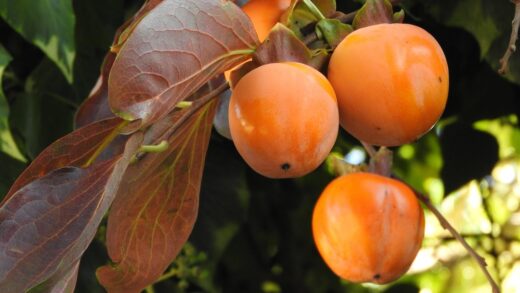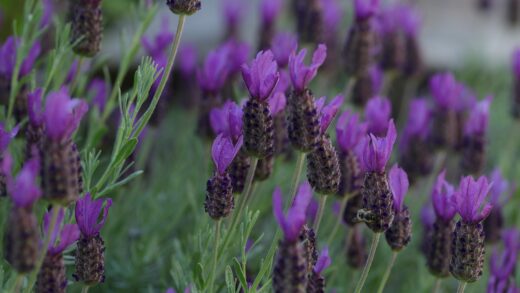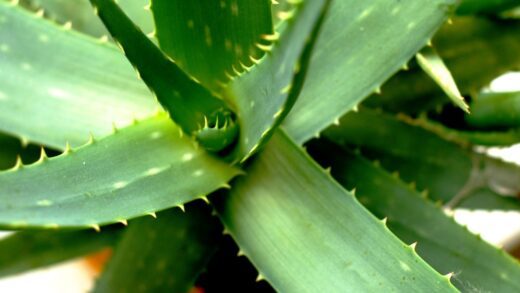Providing the correct amount of water is arguably the most critical aspect of successfully cultivating bacopa. This charming, low-growing plant, with its abundance of delicate flowers, has a high demand for moisture and is notoriously unforgiving if allowed to dry out. Its fine root system is sensitive to drought stress, which can quickly lead to wilting, cessation of flowering, and even plant death. Therefore, establishing a consistent and appropriate irrigation routine is fundamental to maintaining a lush, healthy, and continuously blooming plant throughout the entire growing season. Understanding its specific needs is paramount for any gardener wishing to showcase this plant at its best.
The key to watering bacopa is to maintain a state of consistent moisture in the soil without ever allowing it to become waterlogged. This can be a delicate balance, influenced by numerous factors including container size, soil type, temperature, humidity, and the plant’s stage of growth. A plant in a small hanging basket exposed to wind and sun will require far more frequent watering than one planted in a large container in a partially shaded location. The gardener’s ability to observe the plant and its environment and adjust the watering schedule accordingly is the hallmark of successful cultivation.
Improper watering, in either direction, can lead to significant problems. Underwatering, even for a short period, causes the plant to wilt dramatically. While it may recover if watered promptly, repeated wilting cycles will weaken the plant, reduce its floral display, and make it more susceptible to pests and diseases. Conversely, overwatering can be even more detrimental. Saturated soil deprives the roots of oxygen, leading to root rot, a fungal disease that is often fatal. Yellowing leaves and a general lack of vigour are common symptoms of an overwatered bacopa.
This article provides a detailed guide to the water requirements and proper irrigation techniques for bacopa. It will explore how to assess soil moisture, the best methods for applying water, how to adjust your routine based on environmental factors, and the signs of both under- and overwatering. By mastering these essential skills, you can ensure your bacopa plants remain perfectly hydrated, allowing them to thrive and produce the spectacular cascade of flowers they are known for.
The importance of consistent moisture
Bacopa’s need for consistent moisture is rooted in its natural habitat and its physiological makeup. The plant possesses a fine, fibrous root system that is not adapted to penetrate deep into the soil in search of water. These shallow roots remain in the upper layer of the soil, which is the first to dry out. Consequently, the plant relies on a steady supply of water being available in its immediate root zone. When this upper layer of soil dries, the plant quickly begins to experience water stress, as it has no deep taproot to access moisture from lower soil profiles.
More articles on this topic
This constant need for moisture directly fuels the plant’s rapid growth and prolific flowering. Producing a continuous cascade of blooms from spring until frost requires a significant amount of energy and resources, with water being a primary component. Water is essential for photosynthesis, the process by which the plant creates its food, and for transporting nutrients from the soil to the leaves and flowers. When water is scarce, these vital processes slow down or stop altogether, leading to a noticeable decline in the plant’s health and appearance. The plant will conserve resources by dropping its flower buds and eventually its leaves.
Maintaining even moisture levels also contributes to the overall resilience of the plant. A properly hydrated bacopa is better able to withstand environmental stresses such as high temperatures or attacks from pests. A plant that is chronically underwatered is in a weakened state, making it a more attractive target for insects like aphids and spider mites. Furthermore, plants that experience cycles of wilting and recovery are often less vigorous and have a shorter lifespan than those that are kept consistently moist.
It is crucial to understand that “consistently moist” does not mean “constantly wet.” The soil should feel like a well-wrung-out sponge – damp to the touch, but not dripping or saturated. This condition provides the roots with the water they need while still allowing for enough air pockets in the soil for the roots to breathe. Achieving this balance is the primary goal of any bacopa watering strategy and is the foundation upon which the plant’s health is built.
Methods for assessing soil moisture
To avoid the pitfalls of over- or underwatering, it is essential to have reliable methods for checking the moisture level of the soil. The most simple and effective technique is the manual touch test. This involves inserting your index finger into the soil to a depth of about 2-3 centimetres. If the soil at your fingertip feels dry, it is time to water. If it feels moist, you should wait and check again later in the day or the following day. This direct method provides an accurate assessment of the conditions in the root zone and helps to prevent watering on a rigid schedule that may not align with the plant’s actual needs.
More articles on this topic
For larger pots or for gardeners who prefer a more technological approach, a soil moisture meter can be a useful tool. These inexpensive devices have a metal probe that is inserted into the soil, providing a reading on a scale that typically ranges from ‘dry’ to ‘moist’ to ‘wet’. While they can be helpful, it is important to test them in a few different spots within the container, as moisture levels can vary. It is also a good practice to occasionally verify the meter’s reading with the manual touch test to ensure its accuracy.
Observing the weight of the container is another effective method, particularly for hanging baskets and smaller pots. After giving the plant a thorough watering, lift the pot to get a feel for its maximum weight. As the plant uses water and it evaporates from the soil, the pot will become progressively lighter. With a little practice, you can easily learn to gauge when the pot feels significantly lighter, indicating that it is time to water again. This method is favoured by many experienced growers as it provides a quick and non-invasive way to assess the entire soil mass.
Finally, the plant itself will provide visual cues about its water status. The first sign of underwatering is a slight loss of turgidity in the leaves, followed by wilting. It is best to water before the plant reaches the full wilting stage. Signs of chronic overwatering are more subtle but can include yellowing leaves (especially older, lower leaves), stunted growth, and a general lack of vigour. Learning to read these visual signals, in combination with physically checking the soil, will allow you to develop an intuitive and highly effective watering routine.
Effective irrigation techniques
The way in which you apply water to your bacopa is just as important as the frequency. The primary goal is to deliver water directly to the root zone while keeping the foliage as dry as possible. The best method for this is to use a watering can with a long, narrow spout or a gentle-flow wand attached to a hose. This allows you to direct the water precisely onto the soil surface, underneath the dense canopy of leaves and flowers. This practice significantly reduces the risk of fungal diseases such as powdery mildew and botrytis, which thrive on damp foliage.
When you do water, it is crucial to do so thoroughly and deeply. Apply water slowly and evenly over the entire soil surface until you see it begin to flow out of the drainage holes at the bottom of the container. This ensures that the entire root ball has been moistened, not just the top layer. Shallow, frequent waterings can encourage a shallow root system, making the plant even more susceptible to drying out. A deep watering encourages roots to grow throughout the entire volume of soil, creating a more resilient and healthier plant. After a thorough watering, be sure to empty any saucer or cachepot beneath the container to ensure the plant is not left sitting in standing water.
The time of day you water can also make a difference. Watering in the early morning is ideal. This gives the plant ample moisture to draw upon during the hottest part of the day, reducing the risk of midday wilt. It also allows any moisture that does splash onto the leaves to evaporate quickly as the sun rises. Watering in the evening is a secondary option, but it can leave the foliage damp overnight, potentially increasing the risk of fungal issues, especially in humid climates. Avoid watering in the middle of a hot, sunny day, as water droplets on leaves can act like tiny magnifying glasses, potentially causing scorch marks.
For larger collections of plants or for those seeking a more automated solution, a drip irrigation system is an excellent choice. These systems use a network of thin tubes and emitters to deliver a slow, steady supply of water directly to the soil surface of each plant. They are incredibly efficient, reducing water waste through evaporation and runoff, and they keep foliage completely dry. A drip system connected to an automatic timer can provide the ultimate consistency in watering, which is exactly what bacopa needs to thrive.
Adjusting for environmental factors
A successful irrigation strategy for bacopa cannot be a static, one-size-fits-all schedule; it must be dynamic and responsive to changing environmental conditions. The most significant factors influencing water needs are temperature and sunlight. During hot, sunny, and windy days, the rate of transpiration (water loss from leaves) and evaporation from the soil surface increases dramatically. On such days, it is not uncommon for bacopa in hanging baskets or small pots to require watering twice a day—once in the morning and again in the late afternoon—to prevent wilting.
In contrast, during cooler, cloudy, or rainy periods, the plant’s water requirements will be significantly lower. It is crucial to check the soil moisture before watering automatically during these times. Watering a plant that is already sufficiently moist can easily lead to overwatering and the associated problems of root rot. Always let the feel of the soil be your ultimate guide, rather than the calendar. A plant that needs watering every day in July might only need it every three or four days in May or September.
The type and size of the container also play a huge role in how frequently you will need to water. Small pots, especially those made of porous materials like terracotta, dry out very quickly. Larger containers hold a greater volume of soil, which acts as a reservoir of moisture, and will not need to be watered as often. Similarly, hanging baskets are exposed to drying winds from all directions and are notorious for drying out rapidly. When planting, selecting a larger container than you think you might need can help to create a more stable moisture environment for the roots.
Finally, consider the plant’s stage of growth. A newly planted bacopa will have a smaller root system and may require less water than a large, mature plant that is in full bloom and actively growing. As the plant grows and fills its container, its water demands will increase accordingly. By remaining observant and adjusting your watering practices in response to the weather, the container, and the plant’s own development, you can provide the perfect level of hydration for a season-long display of beauty.
📷: Deavmi, CC BY-SA 3.0, via Wikimedia Commons


















